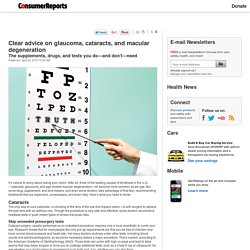

COVID STATISTICS & DISTRIBUTION.
Food and Health Studies. Choice page. Kegel exercises for men: Understand the benefits. How College Students Are Sleeping ... Or Not : NPR Ed. Sleep has a big impact on learning.

And not just when you do it in class. Sleep deprivation affects memory, cognition and motivation, and the effects are compounded when it's long-term. For those reasons, there's been lots of interest in the education world in studying the sleep habits of children and adolescents. But until now, most sleep studies have been limited to short-term surveys with small numbers of participants. That's changing with the advent of wearable activity trackers. But they are worn by large numbers of people in the real world, who voluntarily grant companies like Jawbone the ability to gather lots and lots of data.
Jawbone, the maker of a tracker called UP, just released a study of the sleep habits of tens of thousands of students, ages 18-22, on college campuses. And they found some pretty interesting stuff: Students aren't as sleep-deprived as we might think. At first blush, the results of this study should be reassuring. Sleepless at Stanford. The Proper Height Of A Standing Desk. What is the proper height for a standing desk?

The height of your desk should generally be at elbow height. This means: as your elbows are positioned at a 90 degree angle from the floor, measure the distance from the floor to the bottom of your elbow. The desk should be built to this height. For instance, the average standing desk height for those 5’11” is 44 inches tall, but remember this is guidance and you should consider your body's proportions before settling on a height. Of course you can always grab an adjustable standing desk if you decide to.
The steps to set your standing desk to the correct height are: Stand up straight with your head toward the ceiling and shoulders slightly backHold your arms down by your sides and then bend your elbow to 90 degreesBring the desk up until your fingers gently touch the keyboard keysNow, adjust the height of your monitors so that your eyes are looking across at the top third of the monitor Taking Care of Your Neck and Back A Chair, If Needed. How To Stand Properly. F.lux: sleep research. Trouble sleeping?

If you have sleep trouble or you're trying to learn more about sleep in general, we recommend understandingsleep.org. Study: Reading on a tablet vs. book In 2014, a new study was published in PNAS (full text) that compares the effects of reading an iPad before bed, versus a regular paper book. AMA Report In 2012, the American Medical Association's Council on Science and Public Health made this recommendation: "Recognizes that exposure to excessive light at night, including extended use of various electronic media, can disrupt sleep or exacerbate sleep disorders, especially in children and adolescents. Blue Light Affects Sleep (and here's why) We know that night-time exposure to blue light keeps people up late. To understand the effects of f.lux on sleep, we've spoken with some researchers, and we've read a whole lot of papers.
Popular press coverage of blue light research Blue Light. 8 Proven Strategies to Eliminate Psoriasis. How to increase serotonin in the human brain without drugs. How to increase serotonin in the human brain without drugs. Clear Advice on Eye Diseases. The only way to cure cataracts—a clouding of the lens of the eye that impairs vision—is with surgery to replace the bad lens with an artificial one.

Though the procedure is very safe and effective, some doctors recommend needless tests or push newer types of lenses that pose risks. Skip unneeded presurgery tests Cataract surgery, usually performed as an outpatient procedure, requires only a local anesthetic to numb your eye. Research shows that for most people the only pre-op requirements are that you be free of infection and have normal blood pressure and heart rate. Yet many doctors routinely order other tests, including blood counts and electrocardiograms, as would be necessary before a major procedure.
Be wary of premium lenses In standard cataract surgery, doctors remove the clouded lens and replace it with an artificial, monofocal lens, which provides clear images at either near or far vision. But multifocal lenses cost up to $4,000—and usually aren’t covered by insurance.